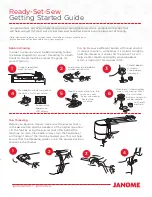Summary of Contents for 1767
Page 1: ...1767 Service Instructions ...
Page 6: ...Table of Contents 4 Service Instructions 1767 00 0 12 2016 ...
Page 10: ...About these instructions 8 Service Instructions 1767 00 0 12 2016 ...
Page 120: ...Decommissioning 118 Service Instructions 1767 00 0 12 2016 ...
Page 122: ...Disposal 120 Service Instructions 1767 00 0 12 2016 ...
Page 126: ...Technical data 124 Service Instructions 1767 00 0 12 2016 ...
Page 127: ......



































